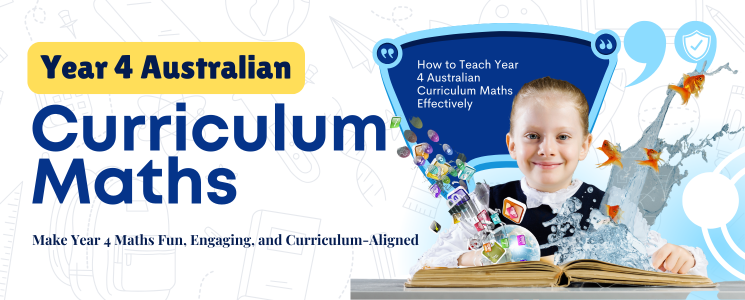Lesson planning is one of the most essential skills every teacher must master. A well-planned lesson helps students stay engaged, meet learning outcomes, and connect classroom concepts to real-life experiences. In Australia, the Australian Teaching Curriculum provides a structured framework to help teachers design effective lessons that meet national standards while encouraging creativity and independent thinking.
This guide will take you through a clear, step-by-step approach to lesson planning using the Australian Teaching Curriculum. Whether you are a new teacher or an experienced educator seeking better alignment with the curriculum, this practical guide will help you create lessons that inspire meaningful learning.
Understanding the Australian Teaching Curriculum
Before you can plan effective lessons, it is important to understand what the Australian Teaching Curriculum aims to achieve. The curriculum provides a national framework that outlines what students should learn and how teachers can deliver that learning across different subjects and year levels.
The goal is to ensure consistency in education across Australia while allowing teachers the flexibility to adapt lessons based on student needs, interests, and local context.
Key Components of the Curriculum
The Australian Teaching Curriculum focuses on three key dimensions:
- Learning Areas: These cover subjects such as English, Mathematics, Science, Humanities, and the Arts.
- General Capabilities: These skills go beyond subject boundaries, including literacy, numeracy, critical thinking, and intercultural understanding.
- Cross-Curriculum Priorities: These include sustainability, Aboriginal and Torres Strait Islander histories, and engagement with Asia.
Together, these dimensions guide how teachers plan, deliver, and assess student learning.
Step 1: Identify the Learning Goals
Every effective lesson starts with clear goals. The Australian Teaching Curriculum defines specific learning outcomes for each year level and subject. As a teacher, your first step is to identify which content descriptor or outcome you want students to achieve.
Why Clear Goals Matter
When learning goals are clearly defined, students understand what they are expected to learn, and teachers can measure progress more accurately.
Tips for Setting Learning Objectives
- Use the curriculum’s content descriptors as a starting point.
- Write objectives that are measurable and achievable.
- Link each goal to one or more general capabilities.
- Keep goals student-centered, focus on what learners will know or do by the end of the lesson.
For example, instead of saying “Teach fractions,” say “Students will be able to identify and represent fractions in everyday contexts.”
Step 2: Design Engaging Learning Experiences
Once your learning goals are set, the next step is designing classroom activities that will help students reach those goals. The Australian Teaching Curriculum encourages teachers to use active learning methods that promote curiosity, creativity, and problem-solving.
Create Connections
Students learn best when they can connect new knowledge to their existing understanding. Start each lesson with a short recap or discussion to activate prior learning. Then, introduce new concepts through real world examples or visual aids.
Examples of Engaging Learning Activities
- Group projects that encourage teamwork and communication.
- Hands-on experiments or role playing for experiential learning.
- Story-based teaching to make abstract topics more relatable.
- Digital tools like educational games or virtual simulations.
These strategies make lessons more dynamic and ensure deeper comprehension.
Step 3: Align Teaching Strategies with Curriculum Standards
Every classroom is unique, but aligning your teaching strategies with the Australian Teaching Curriculum ensures your lessons meet national standards. The goal is to maintain a balance between structured guidance and creative flexibility.
Choosing the Right Teaching Approach
Depending on your subject and student level, different teaching methods may work best. Some examples include:
- Inquiry-Based Learning: Encourages students to explore questions and find solutions.
- Explicit Instruction: Ideal for introducing new or complex topics.
- Collaborative Learning: Builds communication and teamwork skills.
- Project-Based Learning: Allows students to apply knowledge through long-term projects.
When your teaching approach matches the learning outcome, students stay motivated and confident.
Connecting Curriculum and Classroom Practice
Try linking each activity directly to a curriculum outcome. This ensures that every lesson contributes to long-term skill development and makes reporting and assessment easier.
Step 4: Plan for Assessment and Feedback
Assessment is not just about grading, it helps you understand how well students are learning. The Australian Teaching Curriculum emphasizes ongoing assessment to monitor progress and guide instruction.
Types of Assessment
Use a combination of assessment types to get a complete picture of student achievement:
- Formative Assessment: Ongoing checks like quizzes, discussions, or exit tickets.
- Summative Assessment: Final evaluations such as tests, essays, or projects.
- Diagnostic Assessment: Pre assessments to identify student strengths and areas for improvement.
H4: Providing Effective Feedback
Timely and constructive feedback helps students improve and stay motivated.
Focus feedback on effort and progress rather than just results. Encourage students to reflect on what they learned and how they can improve.
Step 5: Incorporate Differentiation into Lesson Plans
Every student learns differently. Differentiation ensures that all learners, regardless of ability, can access and engage with the curriculum. The Australian Teaching Curriculum supports inclusive teaching by encouraging educators to adapt lessons for diverse learning needs.
Differentiation Techniques
- Modify tasks to suit different ability levels.
- Offer varied resources such as visuals, audio, or hands-on materials.
- Adjust pacing for students who need more time.
- Provide extension tasks for advanced learners.
When students feel supported at their own pace, they are more likely to develop confidence and a love for learning.
Creating Inclusive Classrooms
Inclusion goes beyond academic support. Consider cultural backgrounds, language differences, and social emotional needs when planning lessons. An inclusive classroom fosters respect and understanding among all students.
Step 6: Integrate Cross-Curricular Skills and General Capabilities
The Australian Teaching Curriculum encourages teachers to embed general capabilities across subjects. These capabilities help students become lifelong learners who can apply skills in real-world situations.
Examples of Integration
- Combine literacy skills with science or history lessons by encouraging report writing.
- Embed critical thinking in mathematics through reasoning and reflection.
- Use digital technologies to enhance learning and research skills.
By incorporating these capabilities, teachers help students develop not only academic knowledge but also essential life skills.
Step 7: Reflect and Refine Your Lessons
Lesson planning is not a one time process. Continuous reflection helps you improve your approach and adapt lessons based on what works best for your students.
The Australian Teaching Curriculum values teacher reflection as part of professional growth. After each lesson, take time to evaluate what went well and what could be improved.
Questions to Guide Reflection
- Did students achieve the learning outcomes?
- Were the activities engaging and effective?
- Did the assessment methods accurately measure understanding?
- What changes can improve the next lesson?
Regular reflection ensures that your teaching remains dynamic, relevant, and responsive to student needs.
Building Confidence as a Curriculum-Aligned Teacher
Planning lessons with the Australian Teaching Curriculum may seem complex at first, but with practice, it becomes second nature. The framework is designed to support teachers, not restrict them. It gives structure while allowing creativity to flourish.
Benefits of Curriculum-Based Planning
- Ensures consistency across classrooms and schools.
- Promotes high academic standards and student engagement.
- Builds teacher confidence through clear guidance.
- Encourages lifelong learning habits in students.
Moving Toward Excellence
Great teaching happens when planning meets passion. When teachers invest time in thoughtful lesson design, students benefit from clear direction and inspiring learning experiences.
Teaching according to the Australian Teaching Curriculum is more than meeting standards. It is about crafting lessons that spark curiosity, encourage participation, and build essential skills for the future. By identifying clear goals, designing engaging activities, aligning strategies with outcomes, assessing progress, and reflecting regularly, teachers can ensure meaningful learning for every student.
The journey of lesson planning is continuous, but each well-planned lesson brings you one step closer to creating a classroom where every student thrives, confident, capable, and ready for the world.







